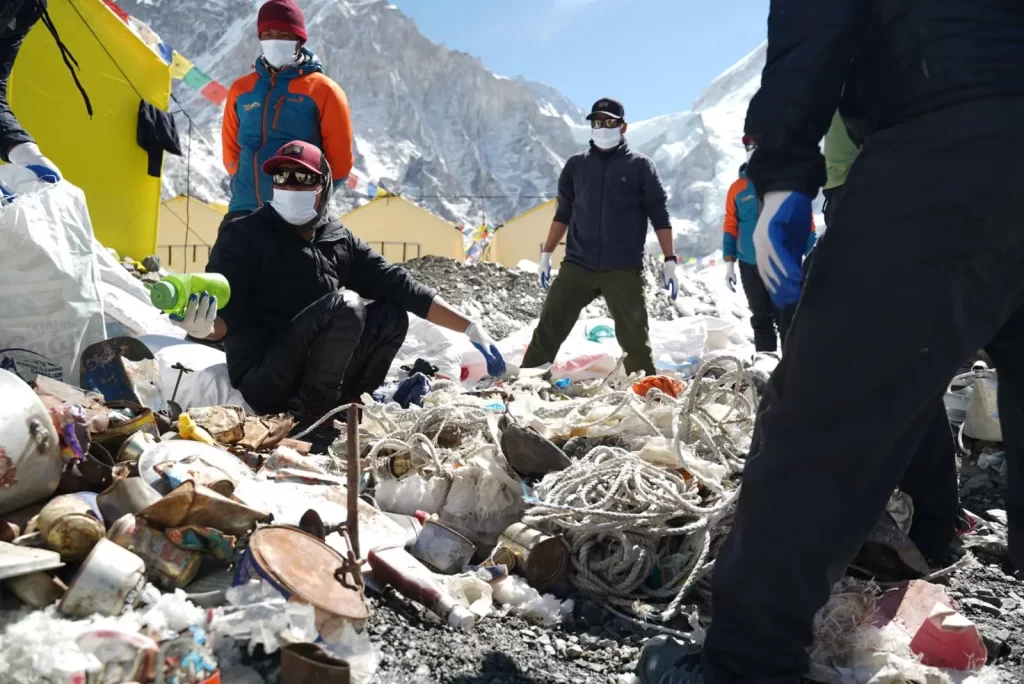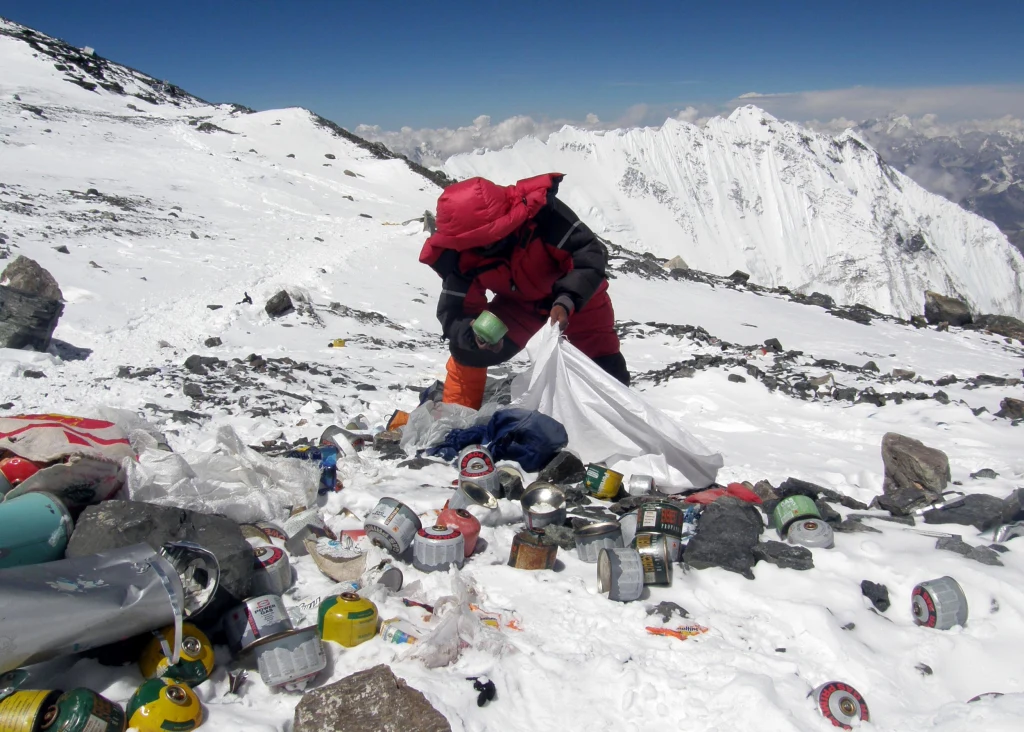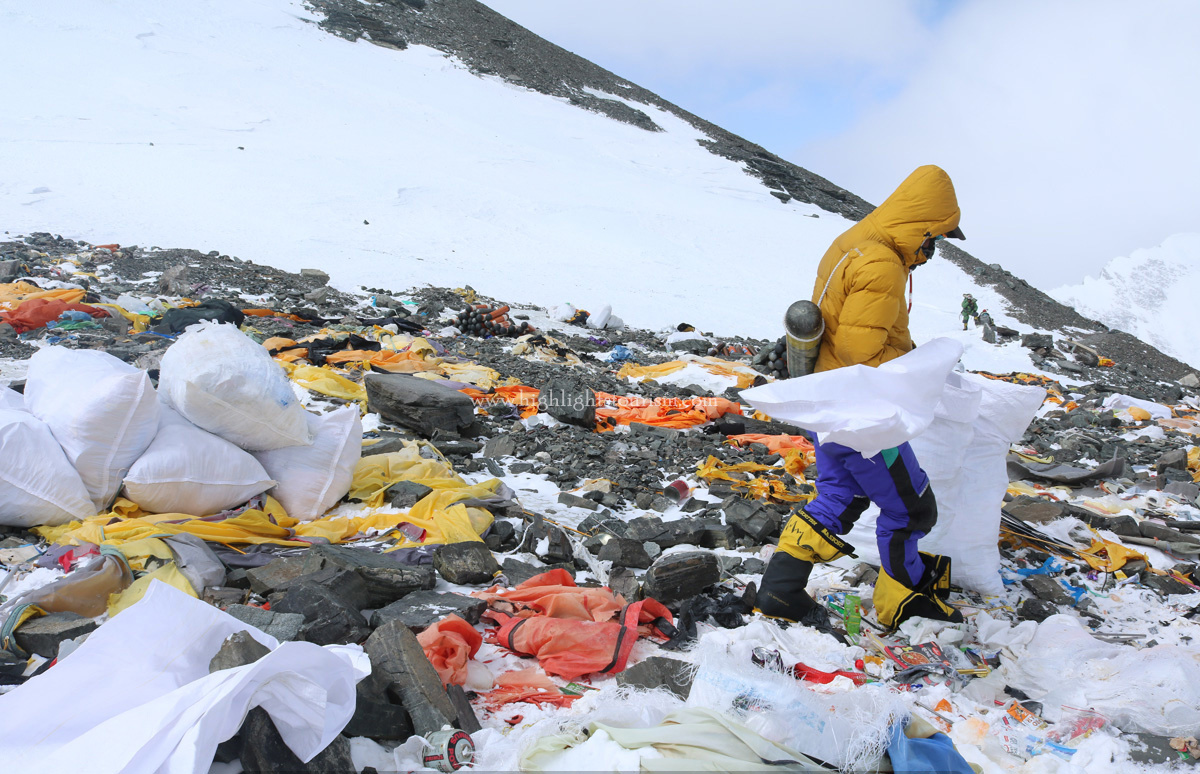Mount Everest, the world’s highest mountain, has attracted thousands of adventurers and climbers eager to put their talents to the ultimate test. Many people died there. Known as ‘Garbage Mountain’ it has become a lightning rod for measuring humanity’s impact on natural sites.
What was supposed to be one of the world’s most pristine sites had devolved into a massive toilet. As the snow melted, the air became thick with the stench of feces. This is the issue confronting Mount Everest as it deals with an ever-increasing number of climbers, many of whom do not bother cleaning up after themselves.
“[It’s] becoming a toilet due to human activity during climbing,” Mingma Chhiri Sherpa, chairman of the Khumbu Pasang Lhamu Rural Municipality, stated.
As a result, beginning this year, climbers from all over the world attempting to ascend the famed peak will be obliged to purchase a toilet bag at base camp and transport it to the summit. When they return, they must hand up the bag containing their trash.
Mountaineer Leave Behind Piles of Garbage
Mount Everest, the world’s tallest peak at 29,032 feet, spans Nepal’s border with Tibet. The climbing season lasts from April to May, with a less popular two-month season beginning in September.
There are two base camps, one approaching the peak from the North Ridge and one from the Southeast Ridge, and three additional camps before the summit: Camp 2 at 21,300 feet, Camp 3 at 23,950 feet, and Camp 4 at 26,000 feet.
Each year, over 500 climbers attempt to reach the summit. In 2023, Nepal granted 478 permits to climb Mount Everest. Of the licenses issued for April, 44 are for climbers from the United States, 22 from China, 17 from Japan, 16 from Russia, and 13 from the UK.
The local municipality, under whose control Mount Everest resides, imposed a new requirement for hikers this year: clean the mountain. “There has been filth due to human activity such as passing urine and stool, so we have decided to distribute poo bags to climbers to preserve Mount Everest and other Himalayan areas from human waste,” she said.
Ang Tshering Sherpa, a senior tourism operator in Nepal and former president of the Nepal Mountaineering Association, discussed the 2007 melting of snow at Camp 2. As a result of the foul odor that ensued, climbers were required to carry a separate bag for feces.
“However, this rule was not fully implemented,” he added. “I hope that the rural municipality’s rule will be fully enforced.”
Mountain climbers report that the smell of pee and excrement lingers after the snow melts. According to Ang Tshering Sherpa, as human activity in the Everest region increases, so does human excrement.
“A significant problem is human waste management in the Himalayas, where hundreds of humans continuously stay at Everest Base Camp for 45 days during the climbing season,” he went on to say. “There are no toilets to manage their urine and feces.”
Tons of Waist Just Left Behind on Mount Everest

According to the Sagarmatha Pollution Control Committee, around 350 climbers visit base camp each spring and leave 70 tons of litter, including 15-20 tons of human waste, 20-25 tons of plastic and paper, and 15-20 tons of degradable culinary waste.
The exact amount of waste gathered above Mount Everest’s base camp is unknown. Mingma Sherpa (not the person stated above), the chairperson of Seven Summit Treks, claims that not all waste is hauled down from the upper side. “Those who go up find their bodies getting heavy, so they can’t bring down the garbage,” he went on to say.
It is thought that garbage has been placed on Mount Everest since 1960. The Nepal Army has been conducting the Clean Himalaya initiative annually for the past seven years, collecting approximately 110 tons between 2019 and 2023, however Sherpa claim that not all waste has been collected. Mingma Sherpa estimates that approximately 30 tons of garbage lie beyond the base camp each year.
As the snow melts, old garbage emerges, and as temperatures rise, it begins to reemerge. The Eco-Everest effort recovered around 38,000kg of garbage and seven dead bodies between 2008 and 2023. According to Ang Tshering Sherpa, the rubbish and dead bodies date back before 1980. “A lot of the waste is from the 1960s to the 1980s, and as the snow melts, older waste will resurface,” he told me.
Climbers to Deposit Waist Bonds

The 1973 Italian Everest expedition was the largest ever, with 134 people, including 112 climbers. According to Ang Tshering Sherpa, 126 tons of supplies for the climbers were flown from Kathmandu to Lukla by plane, and then carried by 3,500 porters to the base camp.
In addition, a helicopter carried 60 tons of cargo above the base camp. During that time, a chopper crashed into Camp 2. Parts of the helicopter were discovered over one and a half kilometers beneath the disaster site in 2009, 36 years after it occurred.
Ang Tshering Sherpa stated that this circumstance, which reveals that Mount Everest’s ever-freezing glacier has moved downward by less than one kilometer in 36 years, is a good example of the negative consequences of global temperature increases on mountains.
The Mountaineering Regulations 2002 require mountain climbing teams to deposit a waste management bond in advance, which varies depending on the peak. The bond for Mount Everest is $4,000.
According to the director-general of the tourism agency, if the team fails to return the garbage from the climb, the bond would be confiscated.
However, Ang Tshering Sherpa claims there is no dependable process for monitoring the crews and the amount of rubbish they bring back. “Even though the liaison officer assigned by the department and the ministry will be given the task of monitoring the ascent, they themselves do not reach the base camp,” the official said.
According to an unnamed hiking company owner, government liaison personnel stay in Kathmandu to sign garbage return paperwork. Based on this, the corporation receives a reimbursement for the bond.
“This was incorrect. “The liaison officer does not even live at base camp,” he explained. “They don’t even consider if the team cleaned it or not. It should be necessary to return waste, but the tourism administration does not listen to us.”
Source: RT






